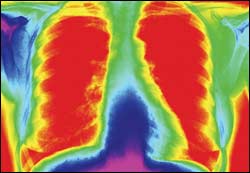By Randell Orner, MS, MBA, PhD, and Shane Snyder, MS, PhD
Most of us have been in situations like this: You provide training to the clinical staff and know you’ve covered everything in detail; yet a week later, you get a call about an equipment problem. You check the equipment and it turns out to be an operator error. You covered this during the training—so why doesn’t the staff remember what you said?
The problem is probably not what was delivered, but how it was delivered. Think back to how you were taught in grammar school. Then think ahead to how you were taught in college or technical school. Was the approach different? Most likely.
There is a difference between learning paradigms for children (pedagogy) and adults (androgogy). In the case of adult learners, these individuals are interested in relating their prior experiences to their current learning. Adult learners tend to be goal-oriented and take ownership of their learning and self-assess it. Also, adult learners tend to look for personal benefits from learning and are motivated to learn for personal growth.
When planning for learning in health care organizations, it’s easy to follow to a traditional educational approach—where presentations and related materials include volumes of data and endless PowerPoint slides (with often irrelevant content). But instead of planning for a one-time event, what if you were to take a more holistic approach?
A Holistic Approach
A holistic process-oriented perspective builds upon existing knowledge while providing opportunities to learn something new. But what exactly does it mean? This article will cover five “rules” to help facilitate successful training for adult learners—but, first, let’s review some basic communication concepts since training and communication are interrelated.
Many training models are rooted in one or more of the communication theories. The general communication process, for instance, involves a sender and receiver and is comprised of five parts: The sender has an idea and the message is encoded in a channel, which then carries the message. The receiver then decodes the message and offers feedback about the message. In this communication process, many barriers can affect the encoding and decoding of the message. Verbal and nonverbal gestures, personal beliefs and assumptions, and differences in backgrounds are just a few of the obstacles that may interfere with the communication process.
In persuasive communication, the professionalism, status, and reputation of the person delivering the message all matter. These characteristics make the deliverer of the message more credible and lead to greater group participation and material retention.
Message characteristics include the understandability and repetition of the message. When training is delivered, it is not reasonable to expect the audience to remember everything after hearing it one time. Repetition is the key to learning. Channel characteristics are the medium through which the message is delivered.
Remember: More complex messages are better understood through the written media. For instance, if training is being delivered on a complex device or software package, it is critical to include handouts for the audience. After all, if the audience has to take notes on everything the trainer is saying, how much time do you think they are spending absorbing the material?
Audience characteristics involve whether or not the audience is knowledgeable or informed about the topic. Years ago, I (Randell) attended a very thorough ventilator training that covered both the vent and the clinical aspects of respiratory therapy. About a year later. I went to a training class on anesthesia machines. The trainer at the anesthesia school broke up the class into a group with zero experience and a group with some experience. The material was the same in the end, but the group with more experience covered the “basics” much quicker. This helped keep their attention and not feel as though they were sitting through unnecessary information being delivered slowly.
With that being said, let’s look at some of the “rules” of training. Sometimes all of these will apply; other times, only one or two will apply.
1. Boil down the training to the essential and necessary facts by avoiding fluff and filler.
Years ago, I attended a training class where the professional trainer reviewed 256 slides and put equal emphasis on every point. Obviously, there’s a better way. Instead, look at the training you will be delivering and break the material into “Need to Know” and “Nice to Know.” Focus on the Need to Know items, such as how to put a new patient in an application or how to search for an existing patient. Ensure the staff understands the fundamentals before exposing them to the Nice to Know items, such as how to change a medical record number because it was put in incorrectly—something that may happen every few months.
When I attended ventilator training school, we were all asked what we expected from the class. One person said: “I want to learn how to read the manual. I will never remember everything, but I want to know how to find it.” That has stuck with me for years, and I try to follow that mindset when training others.
2. Relate the training to trainees’ jobs by using real-life examples situated within the organization.
When providing training, there’s a much better chance the person receiving it will remember the material if you relate it to real-life examples and situations. Think back to when you were trained on a device you had never seen before. You had no reference point or anything to compare it to. Obviously, it’s much easier to learn something when you have some basic knowledge about it, which is why it’s beneficial to relate training to real-life examples.
For instance, if you’re training on a syringe pump, ask the participants: “Has anyone ever had to deliver a bolus injection followed by a steady rate?” Asking that question is a great way to help participants understand the training being delivered since they may encounter such a scenario in an OR environment. Finding real-life examples that the audience can relate to makes the training more valuable.
3. Provide for a degree of self-directed learning by empowering learners to take responsibility for their learning not only during training, but also afterward.
Many years ago, we had an initiative to reduce repairs on certain medical devices. Training was delivered, repair reduction tips were provided, and follow-up training was conducted. But nothing changed. Our department needed to take a different approach to help the clinical staff take more responsibility and understand the impact of the repairs.
We started to post dashboards outside of the department that showed the number of repairs per month and the dollar value of those repairs. We also posted repair avoidance tips that empowered the staff to take responsibility for their own learning while providing them with a snapshot of the expenses associated with the repairs (aka: a cause-and-effect approach). Once the clinical staff became more aware and took self-directed learning more seriously, the repairs decreased. And the reduction of repairs motivated them to continue a self-directed learning path because they were able to see results.
This concept can also be applied to operator errors. Each month, the clinical engineering department typically reports the number of operator errors during Environment of Care (EOC) meetings. Part of the responsibility of the clinical engineering department is to address operator errors with follow-up training. It’s very powerful when you can report to both the EOC committee and department managers that you’ve reduced the number of operator errors by delivering training and motivating staff to be responsible for their own learning. Quantifiable results talk.
4. Facilitate a mechanism for sharing experience, ideas, and the generation of new knowledge within the organization, such as networked training materials, blogs, Wikis, etc.
Everyone has a voice and should be allowed to use it to strengthen learning and organizational knowledge. Although there are formal methods of communication, informal methods should also be considered.
Let’s say all of the physiological monitors are being replaced in the critical-care departments and the way patients’ information is sent to electronic medical records has changed. The clinical staff can be trained and given quick reference guides, but sometimes a forum for peer-sharing is most effective. When clinical staff can learn from each other and share experiences on a blog or a Wiki, it can be very effective. Free blogs can be set up on site like blogger.com.
5. Consider learning a process, rather than a solitary event.
Changes in perspective may be needed, but they rarely happen overnight. This means that coaching, mentoring, and advising may be needed to help learners take on new roles and perspectives when change is required. A training session should not be seen as a single event. Go back to the department and see how they are doing and whether they’re having any issues. Encourage them to share “best practices.”
Remember: Change requires an ongoing support system to transition from point A to point B—a concept that also applies to learning. Rather than viewing training as a compartmentalized series of events, view it as an ongoing opportunity to leverage existing knowledge to cultivate new knowledge, which will move the organization forward in a positive and productive fashion.
Furthermore, training takes place because there is something new to the department. I once read that change is instant, like flipping off a light switch. The part that needs to be managed if the transition—which could take days or even weeks. And managing the transition in training of a new product includes pre-training preparation, ongoing support, and empowering learners.
Randell Orner, MS, MBA, PhD, is an adjunct instructor at Walden University and 20-year veteran of the biomed field. Shane Snyder, MS, PhD, is a lead faculty of MS-CIT at Northern Arizona University.






As with all short lists of rules, this one is incomplete. I would add “Do not denigrate the experience” by saying things like “I won’t take the whole hour”, “Lets get through this as quickly as possible”, etc. As a corollary, act like what is happening really matters.
And of course “Be prepared” including practicing the delivery as necessary. And don’t read from a paper, or simply read the slides to the audience. Don’t have slides you have to apologize for, eg “I know you can’t read this but…”
I once asked myself, as this article starts off, “I trained them but why didn’t they learn?”. But then I saw their perspective: “They made me sit here so why didn’t they teach me anything useful?”